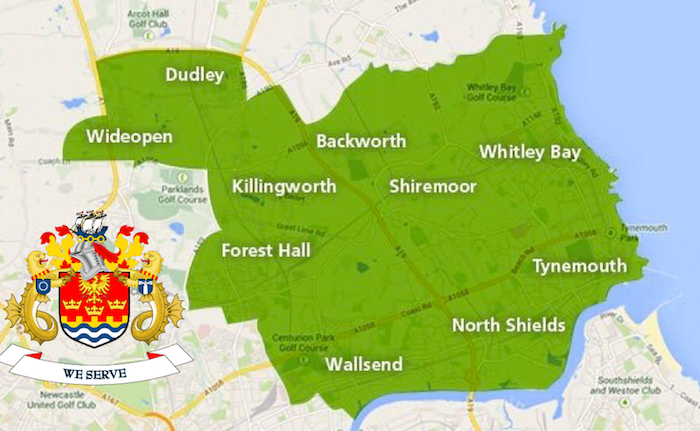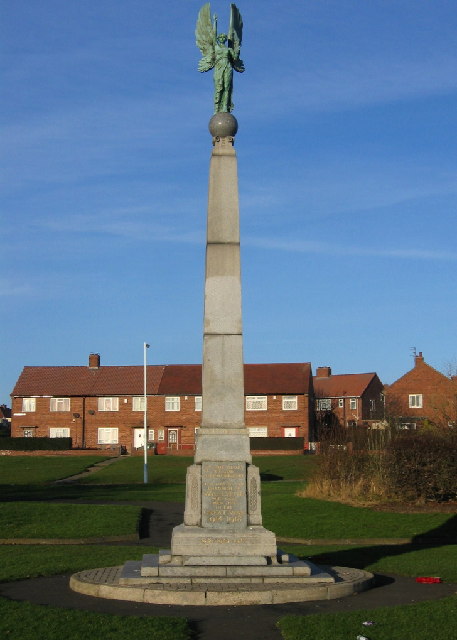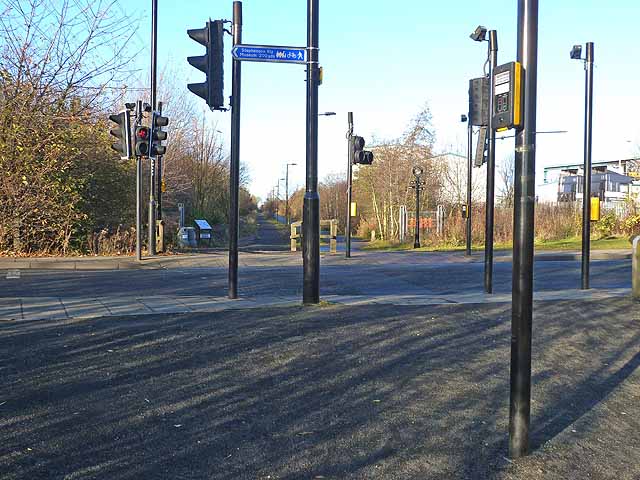Topics > Tyne and Wear > North Tyneside > Wallsend > Wallsend, Historical Account, 1890
Wallsend, Historical Account, 1890
Extract from: Kelly's Directory of Durham, 1890
WALLSEND is a village and parish, 4 miles east-north-east from Newcastle, stretching along the north bank of the Tyne and intersected by the Newcastle and Tynemouth section of the North Eastern railway, which has a station here, in the Tyneside division of the county, eastern division of Castle ward, petty sessional division and union of Tynemouth, North Shields county court district, rural deanery of Tynemouth, archdeaconry of Northumberland and diocese of Newcastle. Wallsend. is said to have derived its name from its position at the eastern extremity of the great Roman wall, which, conmencing at the Solway Firth, terminated in a field a short distance to the east of the site occupied by Carville Hall, where at the present time the north fosse of the wall may be traced: here was the Roman station " Segedunum,” which occupied an area of about 3 ½ acres, on an eminence near the Tyne: a gravelled path now runs for some distance on the site of the wall. The Local Government Act 1858 (21 & 22 Vict, c. 98) was adopted by the township December 14, 1866: the board consists of 12 members. The church of St. Peter, erected in 1807-9, at the cost of about £5,000, is a building of stone, consisting of a nave with semicircular apse, and a western tower with spire containing a clock and 2 bells: the east window is stained. The church was restored and enlarged by the addition of a chancel in 1892, at a cost of nearly £4,000, and now affords sittings for 450 persons. The register dates from the year 1669. The living was declared a rectory November 20, 1866; average tithe rent charge £170, net yearly value £546, including 50 acres of glebe, with residence, in the gift of the Bishop of Newcastle, and held since 1886 by the Rev. James Henderson M.A., formerly fellow of University College, Durham, Hon. canon of Newcastle, and examining chaplain to the Bishop St. Luke’s is an ecclesiastical parish, formed in 1887. The church, erected in 1886, at a cost, when completed, of £7,500, is a building of stone, in the Early English style, consisting of nave and aisles: there are sittings for 550 persons. The register dates from the year 1887. The living is a vicarage, net yearly value £280, in the gift of the Bishop of Newcastle, and held since 1892 by the Rev. William Marlow O’Brady-Jones L.Th, of Durham University, and Surrogate. The area of the district is 469 acres; the population in 1891 was 7,927. A mission room in connection with the parish church has been erected at the west end of the town. Here is a Catholic chapel, built in 1870, and dedicated to St. Columba; there are also Methodist New Connexion and Primitive Methodist chapels, and a Presbyterian chapel, built in 1886, and having 500 sittings. Various Orders in Council relative to interments in the church and graveyard were issued May 23, 1876; May 4 and December 21, 1877; and August 23, 1878. The cemetery, consisting of 9 acres, was formed and consecrated in 1879, and is under the control of a burial board of 9 members. In 1814 some workmen discovered a quantity of Roman masonry and coins a little above high water mark, and also a curious cauldron. About half a mile north-east are the ruins of the ancient church of the Holy Cross, an edifice in the Transition Norman style of the 11th century. The burial ground of this church was closed in February, 1889, by order of the Privy Council, and the cost of keeping it in order will now devolve on the churchwardens, who may issue a precept on the overseers for the necessary expenses. The hospital for infectious diseases was erected by the Local Board at a cost of about £8,000, from designs by Mr. William Hope, architect, North Shields. The Wallsend Co-operative Society erected a large building here in 1875 for trade purposes, over which is a concert hall seating 700 persons. The building was enlarged in 1884, and offices, leading room, refreshment rooms and a library containing 4,000 volumes were added. The Wallsend Variety Theatre was built in 1893. Extensive coal mines exist in the neighbourhood, and this place gives its name to an excellent house coal. Wallsend colliery was opened in 1777, and has been the scene of many dreadful accidents, in one of which on Oct. 23, 1821, 52 men were killed. The Ecclesiastical Commissioners are lords of the manor. The soil is clay; subsoil, clay. The chief crops are wheat and hay. The area of the parish (including the new parishes of Willington and Howdon) is 2,528 acres; rateable value, £77,747; the area of the township, 1,202 acres; rateable value, £49,314; the population in 1891 was 20,113; and the number attached to the mother church in 1891 was 3,330.
Places of Worship, with times of services
- St. Peter’s Church, Tynemouth road, Rev. James Henderson M.A. rector; 10.30 a.m. & 6 p.m.; Wed. 7 p.m.
- St. Luke’s Church, Rev. Wm. M. O'Brady-Jones, vicar.
- St. Luke’s Mission Room, High street (back of).
- St. Columba Catholic, Rev. Edward Walsh, priest.
- Presbyterian, High street west, Rev. Wm. Stuart M.A., B.D.; 10.45 a.m. & 6 p.m.; Thur. 7 p.m.
- Methodist New Connexion, Hadrian road, various; 10.30 a.m. & 6 p.m.; Thur. 7 p.m.
- Primitive Methodist, High street west, 10.30 a.m. & 6 p.m.; Wed. 7 p.m.
- Salvation Army Depot, Roman wall.
- United Methodist Free Church, Buddie street, 10.30 a.m. & 6 p.m.; Tues. 7 p.m.
- Wesleyan Chapel, High street, 10.30 a.m. & 6 p.m.; Tues. 7 p.m.
Schools
- The School Board for the townships of Wallsend & Willington, consisting of 9 members, was formed January 11, 1875, C. H. Newland, Jarrow, clerk to the board.
- Board School, Buddie (boys, girls & infants), built in 1876, for 1,160 children; average attendance, 1,094.
- National School, Tynemouth road (mixed), erected in 1875, for 288 children; average attendance, 227.
- Methodist Free Church. Schools, Buddie street (mixed), for 250 children; average attendance, 234.
- Catholic (mixed & infants), Long row, built in 1876, for 321 children; average attendance, 300.










